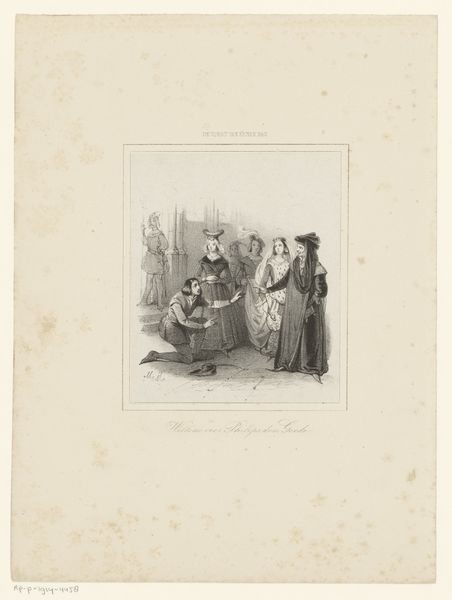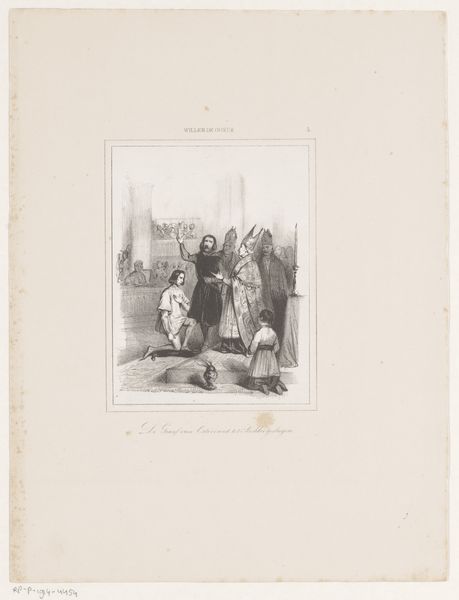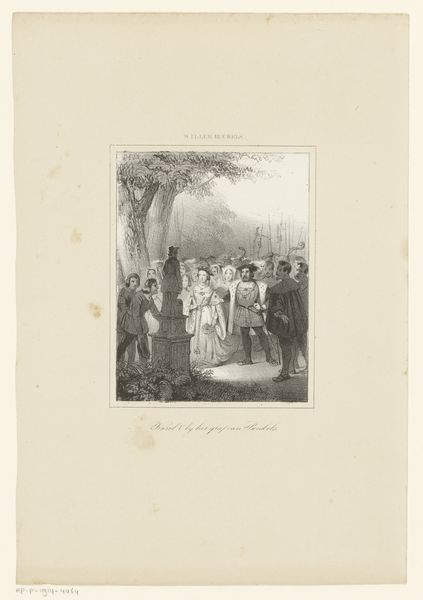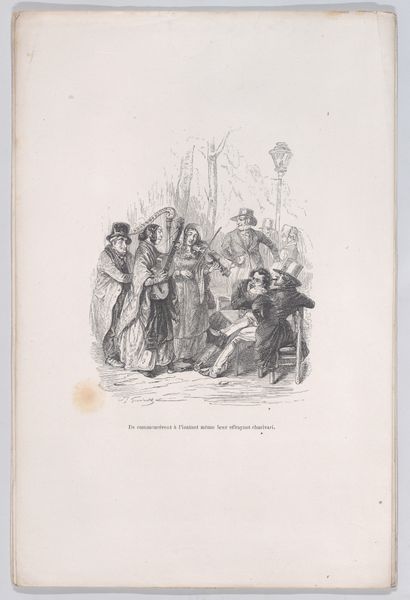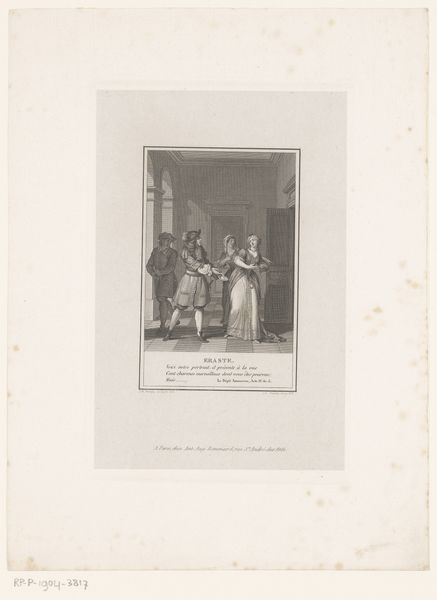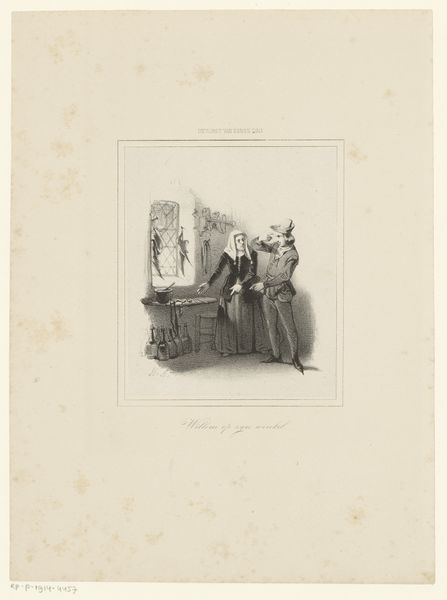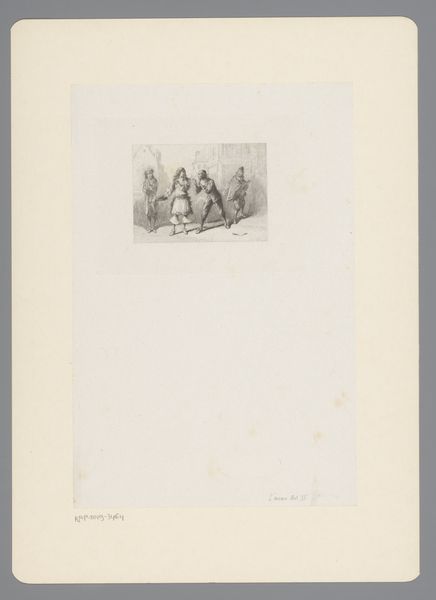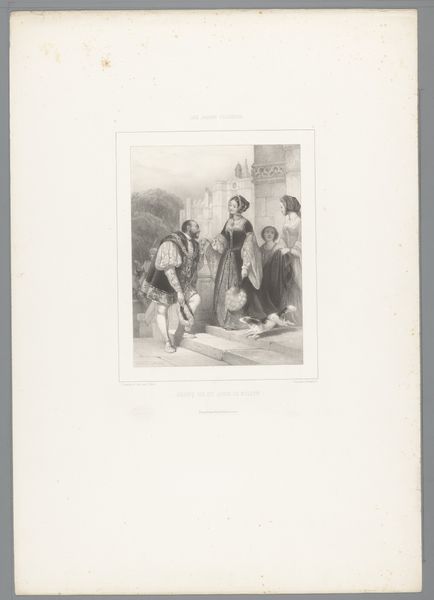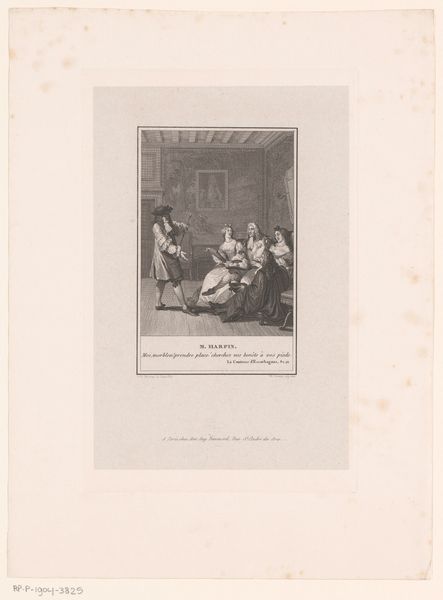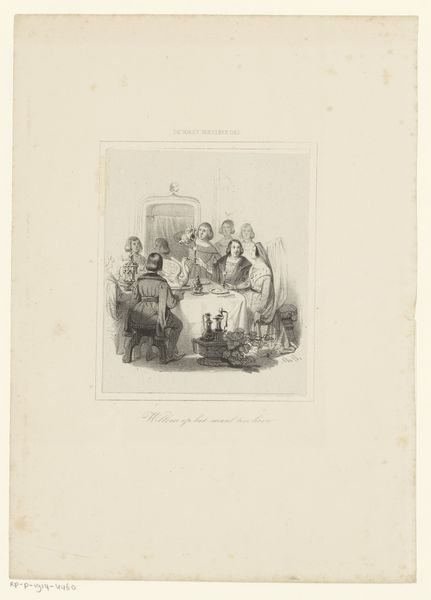
print, engraving
#
portrait
#
medieval
# print
#
old engraving style
#
line
#
history-painting
#
engraving
#
realism
Dimensions: height 295 mm, width 225 mm
Copyright: Rijks Museum: Open Domain
Curator: Immediately, I notice the almost photographic quality of this engraving, but what a curious scene! Editor: Indeed. This is "Willem de schoenmaker op de troon van Willem de Goede," or "William the Shoemaker on the Throne of William the Good." Created in 1842, this print housed here at the Rijksmuseum, offers us a potent commentary on power dynamics. Curator: A shoemaker enthroned! What a powerful image of societal inversion. It speaks to the inherent, almost subconscious human desire for justice and, perhaps, a chuckle at authority. Are we supposed to know who the historical figure represented here is? Editor: Possibly, for viewers at the time. The figures allude to a particular moment—William the Sixth's pilgrimage to Jerusalem. He was captured, and during his captivity, a humble shoemaker assumed the throne. This engraving then isn't merely a scene but a coded recollection, rich with social implications. The objects in the artwork become symbols in this play of history and commentary. Curator: Precisely. The cleric, the royal scepter held nonchalantly – they serve as visual anchors. Consider how the shoemaker occupies the throne. Is this commentary on a crisis of legitimacy, or is it a wider meditation on power's theatricality? Editor: The fine lines create remarkable texture, even in monochrome. This level of detail brings both realism and a clear, crisp narrative focus. But note how despite this seeming fidelity, the shoemaker isn't entirely comfortable on the throne – observe the awkward pose of his extended leg and his shoe almost dangling. Is this realistic or is it allegorical, reminding the viewer about who belongs on the throne? Curator: It’s a fantastic study of symbolism made approachable through realistic depictions. And seeing these symbolic references laid bare, perhaps it reveals just how reliant society is on maintaining these symbols to justify hierarchies. It makes one think about how power is conveyed through image. Editor: Yes, a very telling and powerful choice of perspective by the artist. By analyzing these details and their historical and artistic context, we arrive at something more than just observation—it's a thoughtful understanding of the print and what it reveals about a place, a period, and ourselves. Curator: I agree entirely. What started as a fascinating inversion turns into a deep historical echo, provoking thoughts about enduring societal structures.
Comments
No comments
Be the first to comment and join the conversation on the ultimate creative platform.
